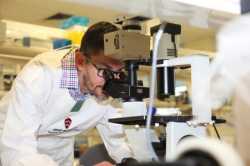Author Interviews, JAMA, Melanoma / 27.01.2016
Indoor Tanning More Than Doubles Melanoma Rate in Young Women
MedicalResearch.com Interview with:
DeAnn Lazovich, Ph.D.
Associate Professor
Division of Epidemiology and Community Health
University of Minnesota
Minneapolis, MN 55454
Medical Research: What is the background for this study? What are the main findings?
Dr. Lazovich: In Minnesota, as well as nationally, melanoma rates have been increasing more steeply in women than men younger than age 50 years since about the mid-1990s. Some have speculated that this could be due to women's indoor tanning use, as women use indoor tanning much more than men do. We had data on indoor tanning for men and women according to their age from a case-control study on indoor tanning and melanoma that was published in 2010. In that 2010 report, we examined the association for individuals regardless of sex, all ages combined. In this analysis, we restricted the study to individuals under age 50 years, and looked at the association between indoor tanning and melanoma according to three age groups (less than 30 years, 30-39 years and 40-49 years) for men and women separately.
(more…)












